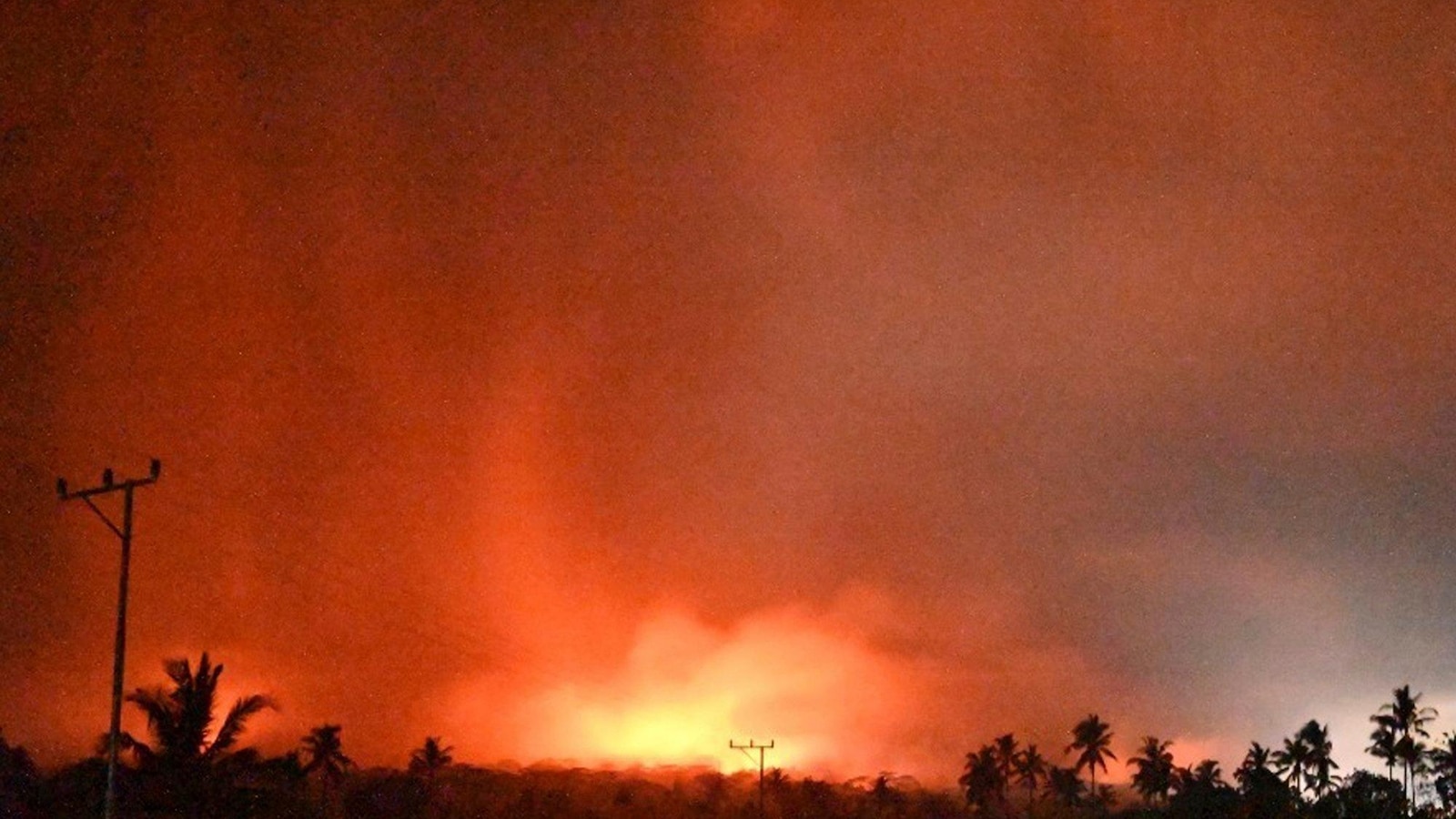MAUMERE, Indonesia — Indonesia’s National Disaster Management Agency said Monday that at least 10 people have died as a series of volcanic eruptions widens on the remote island of Flores.
The eruption at Mount Lewotobi Laki Laki around midnight spewed thick brownish ash as high as 2,000 meters (6,500 feet) into the air and hot ashes hit several villages, burning down houses including a convent of Catholic nuns, said Firman Yosef, an official at the Mount Lewotobi Laki Laki monitoring post.
He said volcanic material was thrown up to 6 kilometers (3.7 miles) from its crater, blanketing nearby villages and towns with tons of volcanic debris and forcing residents to flee.
Rescuers were still searching for more bodies buried under collapsed houses, said Abdul Muhari, the National Disaster Management Agency’s spokesperson. Muhari said all the bodies, including a child, were found with a 4-kilometer (2.4 mile) radius of the crater.
He said at least 10,000 people have been affected by the eruption in six villages of Wulanggitang District, and four villages in Ile Bura district. Some have fled to relatives’ houses while the local government is readying schools to use as temporary shelters.
The country’s volcano monitoring agency increased the volcano’s alert status to the highest level and more than doubled the exclusion zone to a 7-kilometer (4.3-mile) radius after midnight on Monday as eruptions became more frequent.
A nun in Hokeng village died and another was missing, said Agusta Palma, the head of the Saint Gabriel Foundation that oversees convents on the majority-Catholic island.
“Our nuns ran out in panic under a rain of volcanic ash in the darkness,” Palma said.
Photos and videos circulated on social media showed tons of volcanic debris covering houses up to their rooftops in villages like Hokeng, where hot volcanic material set fire to houses.
Lewotobi Laki-laki is one of a pair of stratovolcanoes in the East Flores district of East Nusa Tenggara province known locally as the husband — “Laki-laki” means man — and wife mountains. Its mate is Lewotobi Perempuan, or woman.
About 6,500 people were evacuated in January after Mount Lewotobi Laki Laki began erupting, spewing thick clouds and forcing the government to close the island’s Frans Seda Airport. No casualties or major damage were reported, but the airport has remained closed since then due to seismic activity.
In a video conference on Monday, Muhammad Wafid, the head of Geology Agency at the Energy and Mineral Resources ministry said there was a different character between January’s eruption and Monday’s eruption due to a blockage of magma in the crater, which reduced detectible seismic activity while building up pressure.
“The eruptions that occurred since Friday were due to the accumulation of hidden energy,” Wafid said.
It’s Indonesia’s second volcanic eruption in as many weeks. West Sumatra province’s Mount Marapi, one of the country’s most active volcanos, erupted on Oct. 27, spewing thick columns of ash at least three times and blanketing nearby villages with debris, but no casualties were reported.
Lewotobi Laki-laki is one of the 120 active volcanoes in Indonesia, an archipelago of 280 million people. The country is prone to earthquakes, landslides and volcanic activity because it sits along the “Ring of Fire,” a horseshoe-shaped series of seismic fault lines around the Pacific Ocean. ___
Associated Press writers Niniek Karmini and Edna Tarigan in Jakarta contributed to this report.

